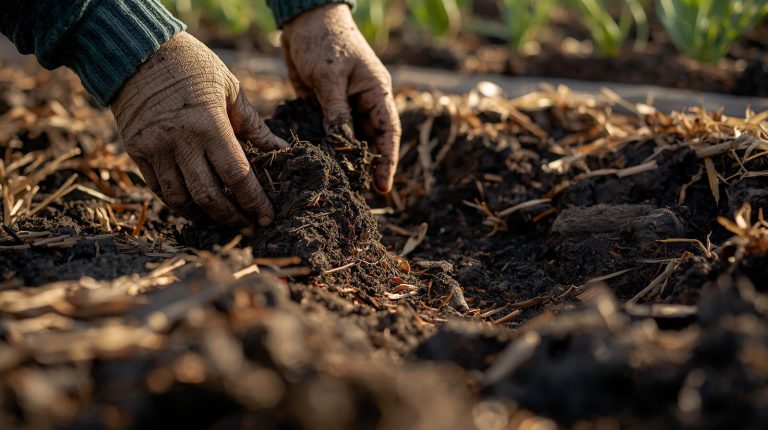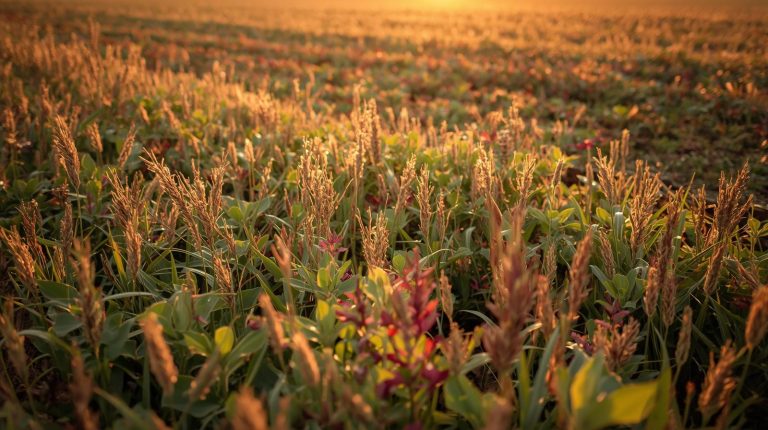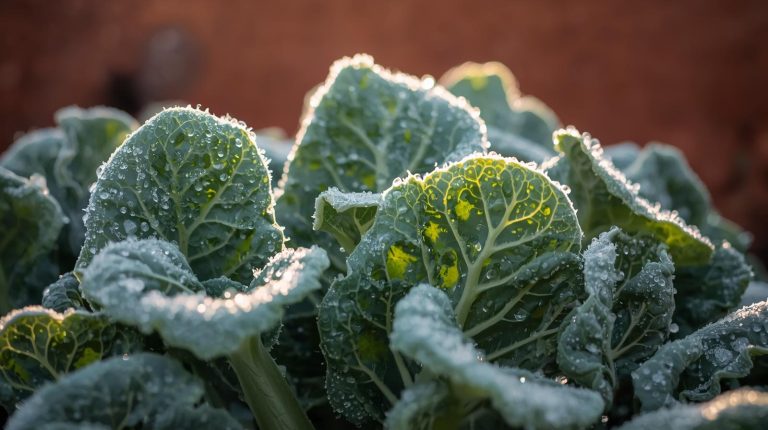Are you ready to embark on a journey of self-sufficiency and creativity? Look no further than herbal gardening. Not only does this hobby provide fresh herbs for cooking and medicinal purposes, but it also allows you to connect with nature and take control of what you put in your body.
But where to start? Choosing the right herbs for your garden is crucial, as different plants require different growing conditions. Once you have selected your herbs, it’s time to prepare the soil for optimal growth.
From there, watering and fertilizing techniques must be mastered, along with managing pests and diseases naturally. But don’t worry – with the right knowledge and passion, anyone can become a successful herb gardener.
So roll up your sleeves and get ready to exercise that green thumb!
Choosing the Right Herbs for Your Garden
Picking the perfect herbs for your plot is like selecting just the right spices to add flavor to a dish. It’s essential to consider your herbal garden design, and what you want to achieve from growing your herbs. Do you plan on starting an herb garden for cooking purposes, or are you looking at medicinal plants? Answering these questions will help determine which herbs are best suited for your needs.
Keep in mind that some plants thrive better in certain areas than others, so it’s vital to know what type of soil and sunlight conditions each plant requires before planting them. With careful planning and research, you’ll be able to create a beautiful and thriving herb garden that satisfies both your senses and practical needs.
Now, let’s move on to preparing the soil for optimal growth.
Preparing the Soil for Optimal Growth
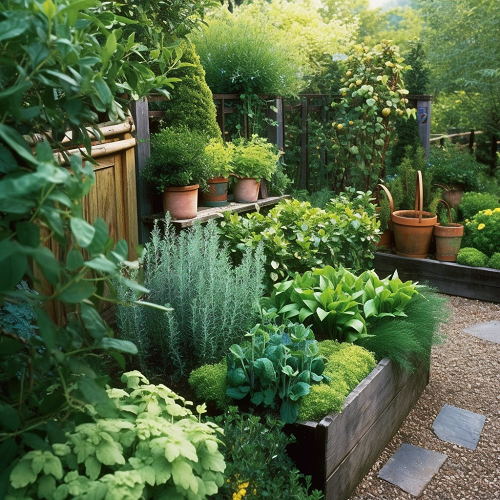 You’ll want to make sure your soil is as rich as possible to give your plants the best chance at thriving, like a warm hug on a chilly day.
You’ll want to make sure your soil is as rich as possible to give your plants the best chance at thriving, like a warm hug on a chilly day.
Here are some herbal gardening tips to help you prepare the soil for optimal growth when starting an herb garden:
- Choose a spot with well-drained soil that receives plenty of sunlight. Most herbs prefer slightly alkaline soil with a pH between 6 and 7.
- Remove any weeds, rocks, or debris from the area where you plan to plant your herbs. This will prevent competition for nutrients and water.
- Mix organic matter into the soil such as compost, manure, or peat moss. Organic matter provides essential nutrients while improving drainage and water retention.
Cultivating healing plants requires attention to detail and care, so don’t skip this crucial step in the process.
Once you’ve prepared your soil, it’s time to move on to watering and fertilizing techniques for your herbal garden design.
Watering and Fertilizing Techniques
Get ready to learn the best watering and fertilizing techniques for your herb garden, so your plants can thrive all season long!
When it comes to watering, it’s important to strike a balance between under- and over-watering. Most herbs prefer well-draining soil that isn’t too soggy or waterlogged, but they also need consistent moisture to grow strong and healthy. As a general rule of thumb, try to water your plants deeply once or twice a week (depending on weather conditions), rather than giving them frequent shallow drinks.
When it comes to fertilizing, there are several options for cultivating healing plants in a natural and sustainable way. One popular method is using compost or manure as an organic fertilizer, which can help improve soil structure and add nutrients back into the earth. You can also use liquid fish emulsion or seaweed extract as an alternative source of plant food, which is high in minerals like potassium and nitrogen.
Whatever you choose, be sure not to over-fertilize your herbs since this can lead to stunted growth or even damage their delicate roots. With these herbal gardening tips in mind, you’ll be well on your way to growing medicinal herbs that are both beautiful and bountiful!
Now let’s move onto the next step: managing pests and diseases naturally.
Managing Pests and Diseases Naturally
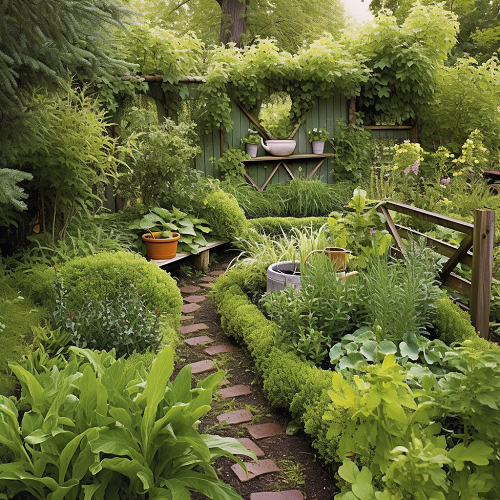 Now it’s time to learn how to keep those pesky pests and diseases at bay in your herb garden, so you can enjoy a bountiful harvest all season long! As an herbal gardener, it’s important to understand that chemicals aren’t the answer when it comes to managing pests and diseases. Instead, focus on prevention and natural solutions that won’t harm you or your plants.
Now it’s time to learn how to keep those pesky pests and diseases at bay in your herb garden, so you can enjoy a bountiful harvest all season long! As an herbal gardener, it’s important to understand that chemicals aren’t the answer when it comes to managing pests and diseases. Instead, focus on prevention and natural solutions that won’t harm you or your plants.
Here are some herbal gardening tips for managing pests and diseases naturally:
- Introduce beneficial insects: Ladybugs, lacewings, and praying mantises are just a few examples of beneficial insects that can help control pest populations in your garden.
- Practice crop rotation: Crop rotation is an effective way to prevent soil-borne diseases from building up over time. Rotate your herbs every year or two by planting them in different areas of your garden.
- Use natural remedies: There are many natural remedies available for common plant ailments such as powdery mildew or aphids. Examples include neem oil, garlic spray, and compost tea.
As you start growing medicinal herbs and cultivating healing plants in your garden, remember that taking care of them is more than just watering and fertilizing. By implementing these herbal gardening tips for managing pests and diseases naturally, you’ll be able to maintain a healthy garden without resorting to harmful chemicals.
Now let’s move on to the next step: harvesting and preserving your herbs!
Harvesting and Preserving Your Herbs
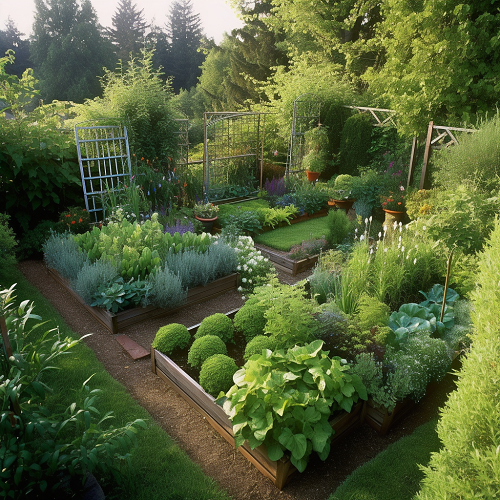 After all your hard work growing medicinal herbs, it’s time to learn how to harvest and preserve them for future use. When harvesting, make sure to choose the right time of day and season. Early morning or late afternoon is best, as the sun isn’t too strong and the plants are well hydrated. Also, wait until your plant has reached full maturity before harvesting. This will ensure that you get the most potent and flavorful herbs.
After all your hard work growing medicinal herbs, it’s time to learn how to harvest and preserve them for future use. When harvesting, make sure to choose the right time of day and season. Early morning or late afternoon is best, as the sun isn’t too strong and the plants are well hydrated. Also, wait until your plant has reached full maturity before harvesting. This will ensure that you get the most potent and flavorful herbs.
When it comes to preserving your herbs, there are several methods you can use depending on what you plan to do with them. Drying is a popular method that works well for many types of herbs such as basil, sage, oregano, thyme, and rosemary. Simply tie small bunches of herbs together with twine or string and hang them upside down in a dry place with good air circulation. Once they’re fully dried (usually after 1-2 weeks), remove the leaves from the stems and store them in an airtight container away from light and heat.
You can also freeze your fresh herbs in ice cube trays filled with water or oil for easy use later on. With these herbal gardening tips under your green thumbs belt, you’ll be able to enjoy fresh herbs year-round!
As you move forward in using your preserved herbs creatively in everyday cooking or other uses around the house like making candles or teas — remember that there’s no wrong way to experiment with new flavors!
Creative Ways to Use Your Herbs
Discover creative ways to incorporate your freshly preserved herbs into various culinary and household endeavors, elevating their flavors and potential beyond the typical uses.
For example, add fresh basil or oregano to homemade pizza sauce for a burst of flavor. Mix chopped rosemary with olive oil and sea salt for a delicious dip or marinade for grilled meats. Use lavender in sugar scrubs or sachets to keep your linens smelling fresh.
In addition to cooking and household uses, herbs can also be used for medicinal purposes. Chamomile tea can help calm nerves and aid in sleep, while peppermint can soothe upset stomachs.
With a little bit of creativity, the possibilities are endless! Now let’s move onto troubleshooting common herb gardening issues.
Troubleshooting Common Herb Gardening Issues
If your herbs aren’t looking as vibrant and healthy as you’d like, don’t worry – this section will guide you through troubleshooting common issues and getting your herb garden back on track.
One of the most common issues that herbal gardening enthusiasts face is overwatering. Herbs prefer well-draining soil, and if they’re sitting in water for too long, their roots can rot and die. To avoid overwatering, make sure your pots or garden beds have adequate drainage holes and only water when the top inch of soil feels dry to the touch.
Another issue that can affect your herb garden is inadequate sunlight. Most herbs need at least six hours of direct sunlight each day to thrive, so if you’re growing them indoors or in a shady spot outside, they may not be getting enough light. Consider moving them to a sunnier location or adding artificial lighting if necessary.
In addition, make sure you’re not overcrowding your plants – they need room to grow and spread out their leaves to capture as much sunlight as possible.
With these herbal gardening tips in mind, even those without green thumbs can troubleshoot common issues and enjoy a thriving herb garden with curious minds!
Frequently Asked Questions
What is the best way to store herbs for long-term use?
When it comes to storing herbs for long-term use, the best way is to dry them properly.
To do this, first, remove any damaged or yellowing leaves and wash the herbs thoroughly. Then, tie them in small bundles and hang them upside down in a warm and well-ventilated area until completely dry.
Once dried, remove the leaves from the stems and store them in an airtight container away from direct sunlight and heat. This will help preserve their flavor and potency for many months to come.
By taking these simple steps, you can ensure that your herbs are always fresh and ready when you need them for cooking or medicinal purposes. So, go ahead and enjoy the freedom of having your own delicious homegrown herbs at your fingertips!
How do I know if my herbs are ready to be harvested?
When it comes to harvesting herbs, timing is everything. You don’t want to wait too long and miss your window of opportunity, but you also don’t want to harvest too early and end up with underdeveloped plants.
So how do you know when the time is right? Well, as the saying goes, “the proof of the pudding is in the eating.” It’s all about testing and tasting. Take a small sample from your herbs and give them a try. Are they flavorful? Aromatic? If so, then it’s likely that they’re ready for harvesting.
But if they’re lacking in taste or scent, give them a little more time to mature before trying again. Remember, with gardening comes a sense of freedom- the ability to create something beautiful and bountiful from scratch- so take your time, test often, and enjoy the journey!
Can I grow herbs indoors, and if so, what special considerations are there?
Growing herbs indoors is a fantastic option for those who want the convenience of fresh herbs at their fingertips without having to go outside. Most herbs can be grown successfully in containers, as long as they have proper drainage and enough light.
However, there are some special considerations when growing herbs indoors. Firstly, you’ll need to choose the right location with adequate sunlight or invest in grow lights to ensure your plants receive enough light. Secondly, be mindful of watering – indoor environments tend to be drier than outdoors, so don’t overwater but also don’t let them dry out completely. Lastly, remember that air circulation is important for preventing pests and diseases from setting in, so make sure to keep a fan nearby or crack a window occasionally.
With these tips in mind, you’ll be able to enjoy fresh herbs all year round from the comfort of your own home!
What are some common mistakes that beginners make when starting an herb garden?
Starting an herb garden can be a thrilling experience, but it’s important to avoid common mistakes that many beginners make. One of the biggest mistakes is not giving your herbs enough sunlight – they need at least 6 hours of direct sunlight each day. Another mistake is overwatering, which can lead to root rot and other issues.
It’s also important to choose the right soil and fertilizer for your specific herbs, as well as properly spacing them out in your garden. Don’t forget to regularly prune and harvest your herbs to encourage growth! By avoiding these mistakes and dedicating time and effort into your herb garden, you’ll be able to reap the rewards of fresh, aromatic herbs right at home.
What are some lesser-known herbs that are easy to grow and have unique health benefits?
Looking for some unique herbs to add to your gardening collection? Consider growing lemon balm. It’s a fragrant herb that’s been used for centuries as a natural stress-reliever and sleep aid. Another easy-to-grow option is comfrey. It contains compounds that promote healing and can be used topically as a salve.
And don’t forget about lovage. It’s an herb with a celery-like flavor that’s rich in antioxidants and can help improve digestion. These lesser-known herbs may not be as popular as basil or mint, but they still offer plenty of health benefits and are perfect for those looking to branch out in their herbal gardening endeavors.
Conclusion
So, you think you’ve got a green thumb, do ya? Well, after reading this article on herbal gardening tips, we’re not so sure. We gave you all the information on choosing the right herbs for your garden and preparing the soil for optimal growth. We even covered watering and fertilizing techniques as well as managing pests and diseases naturally.
But do you have what it takes to put all of that into practice?
Managing an herb garden is not for the faint of heart. It takes dedication and hard work to grow healthy plants that will yield bountiful harvests. However, with our tips and tricks, we’re confident that even the most novice gardener can succeed in growing their own herbs.
So go ahead and give it a try – just don’t say we didn’t warn you about how addicting it can be!
Happy planting!


